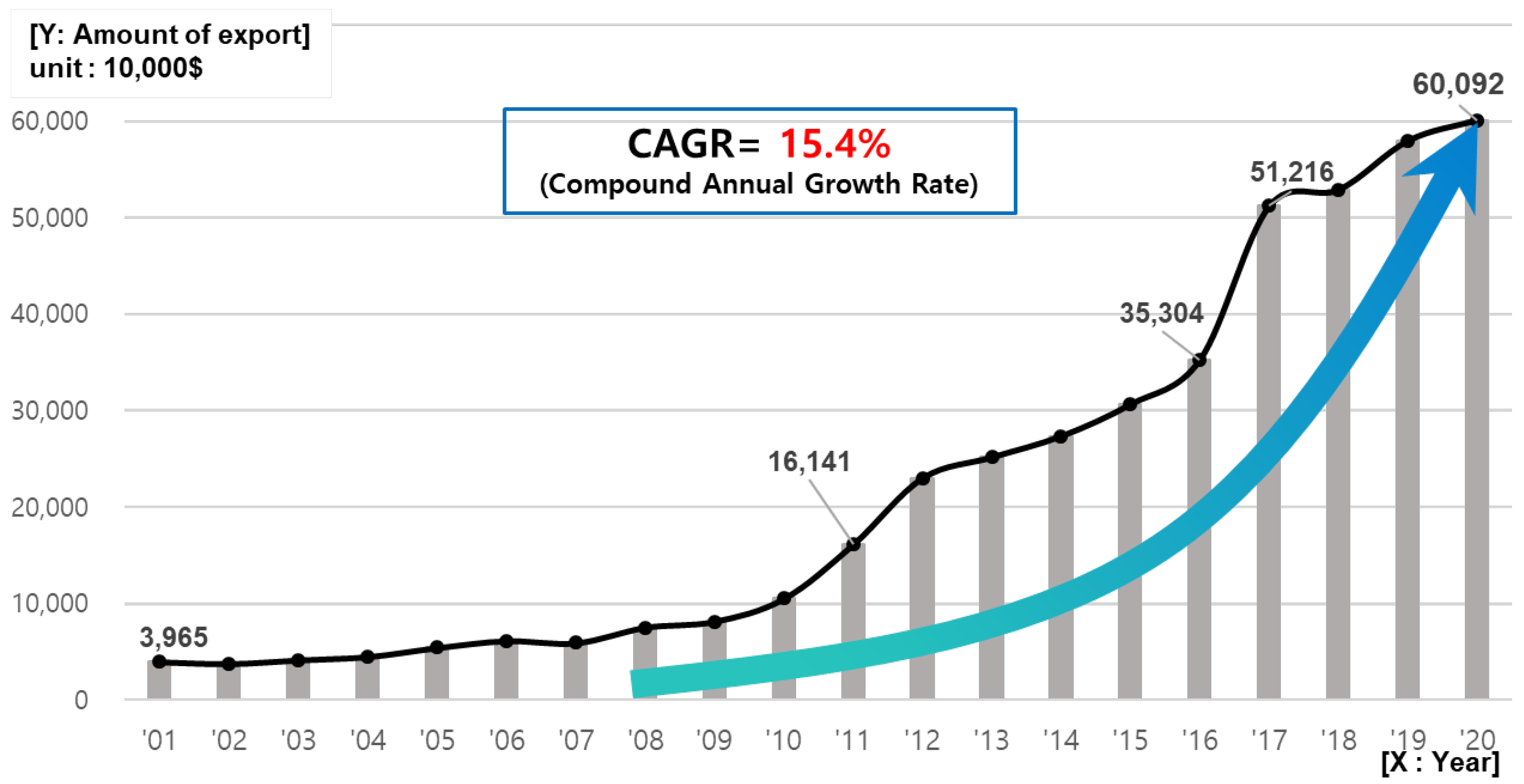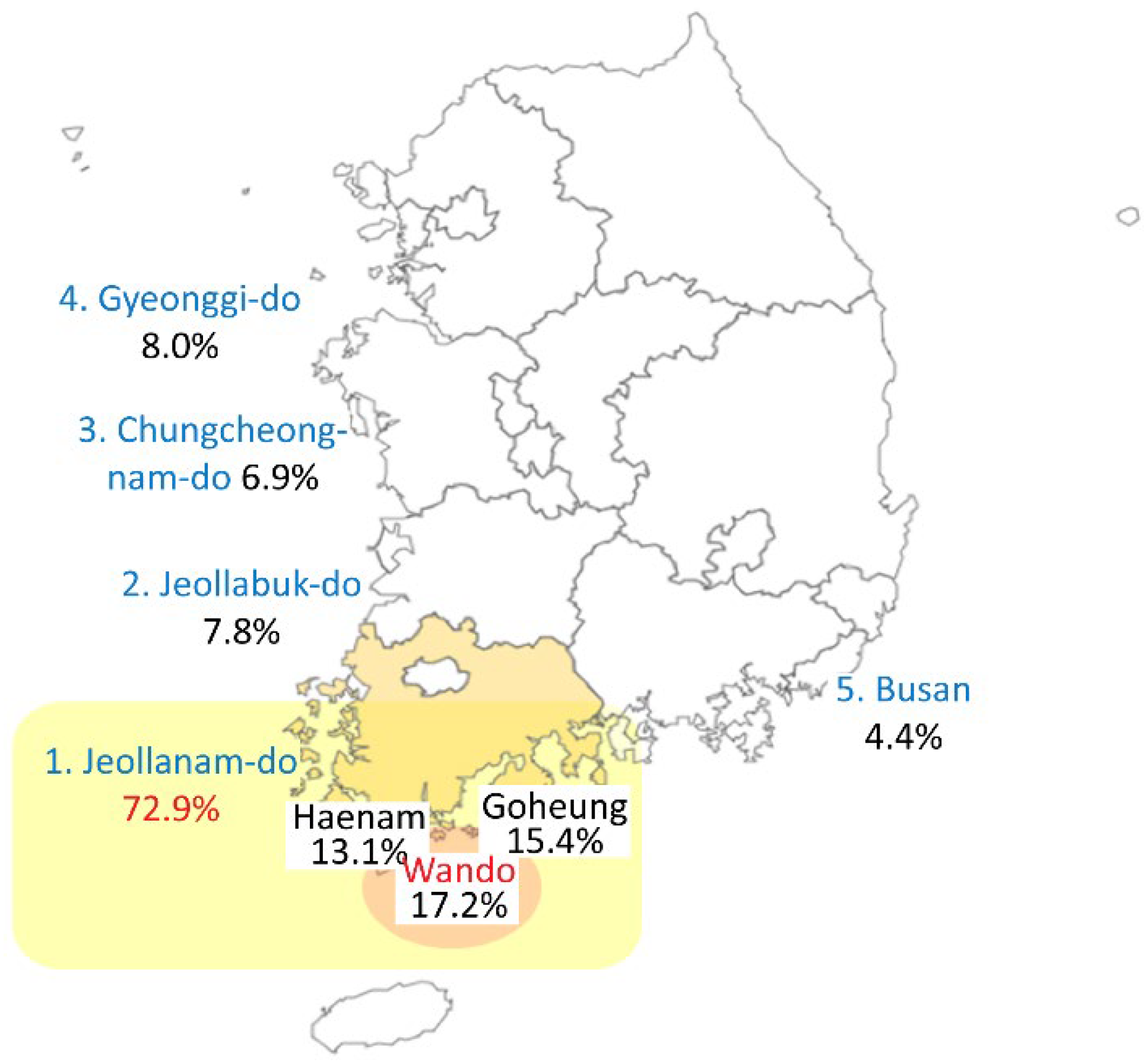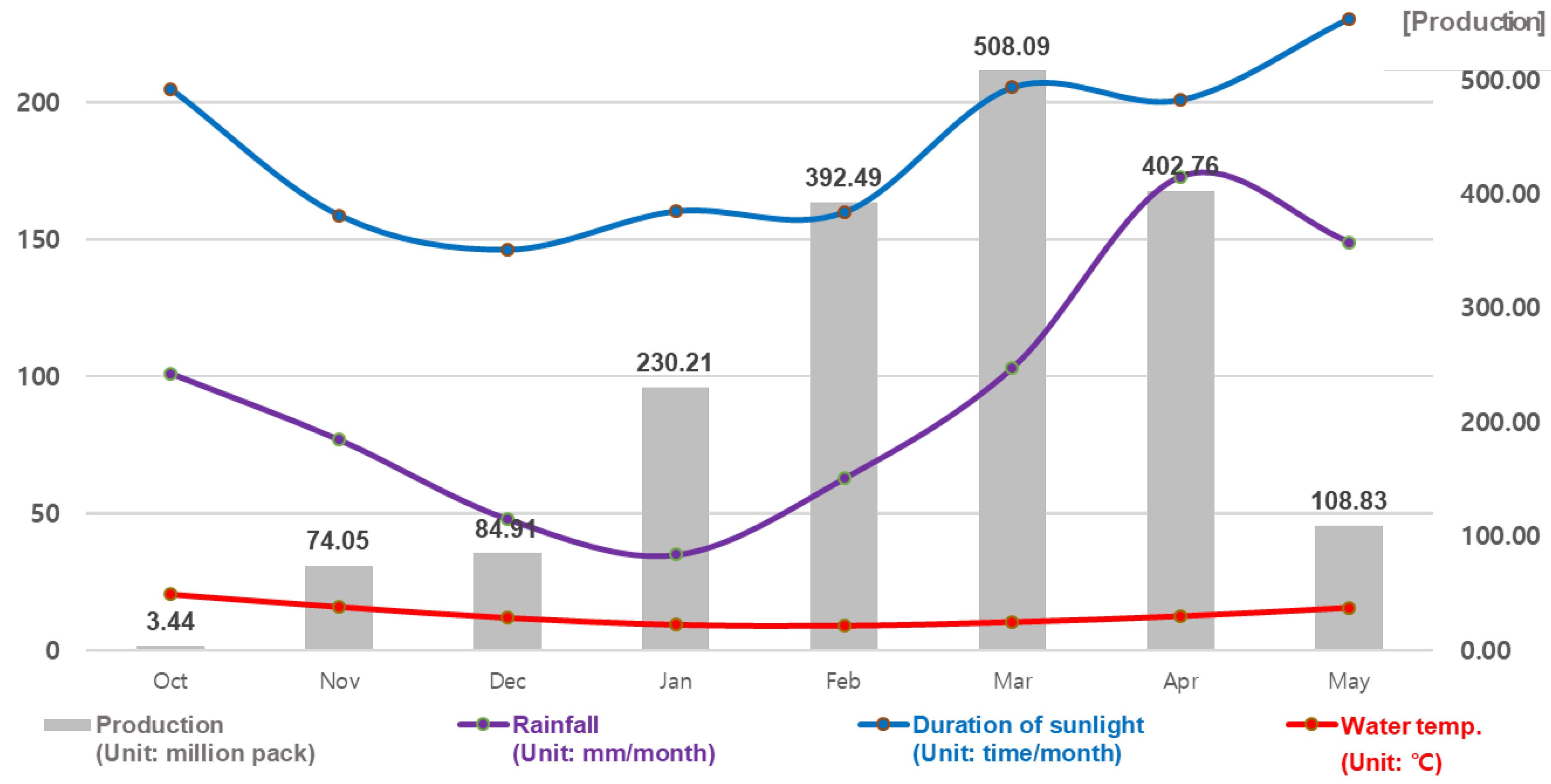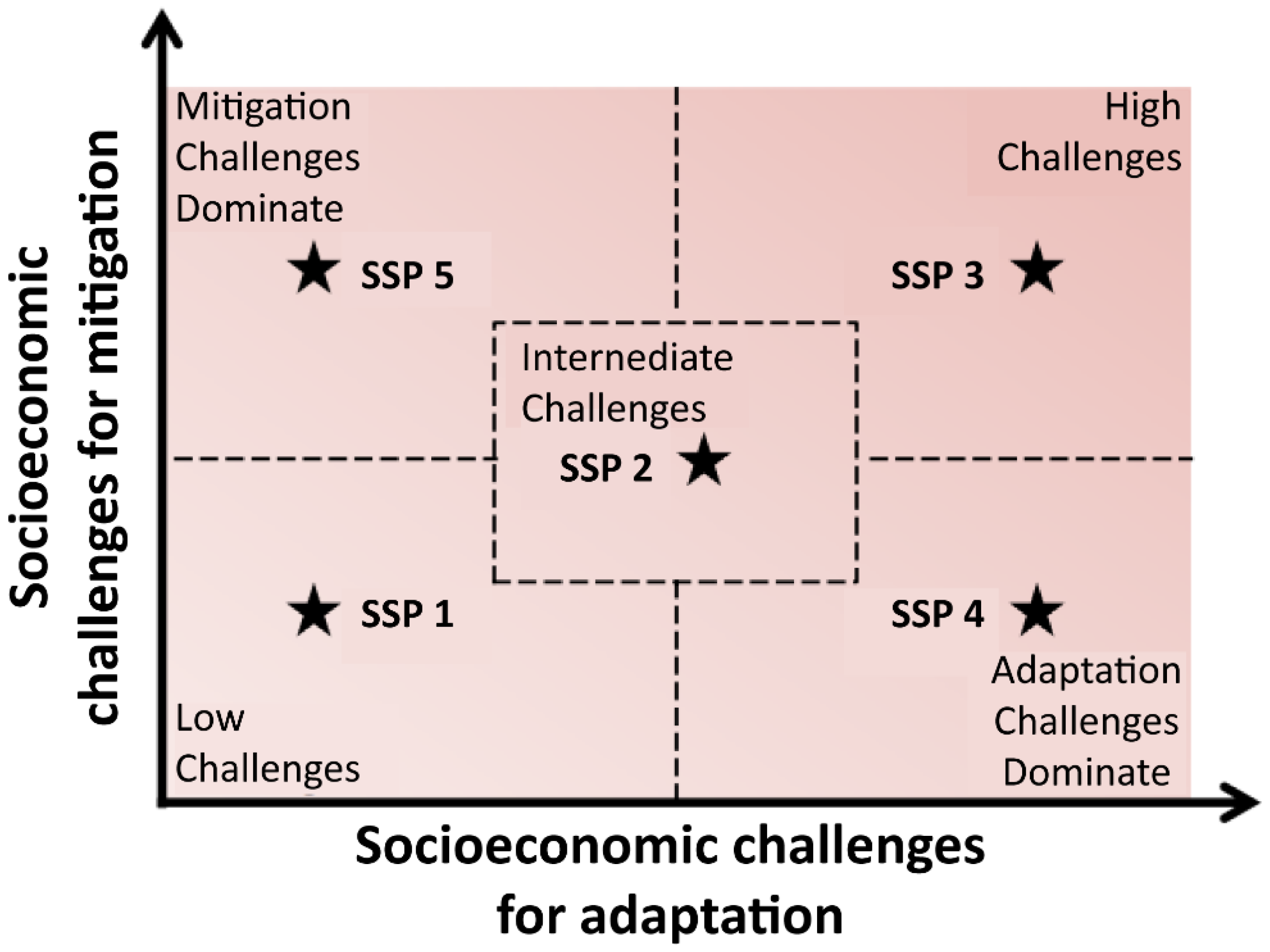Submitted:
21 May 2024
Posted:
23 May 2024
You are already at the latest version
Abstract
Keywords:
1. Introduction
2. Material and Methods
2.1. Study Areas
2.2. Multiple Linear Regression
2.3. Data Sources
2.4. Data Characteristics
3. Results
3.1. Model Derivation
3.2. Relationship between Laver Production and Environmental Variables
3.3. Future Climate Change/IPCC CMIP6 Scenarios
3.4. Laver Production Changes under Various IPCC CMIP6 Scenarios
4. Discussion
Author Contributions
Institutional Review Board Statement
Informed Consent Statement
Acknowledgments
Conflicts of Interest
References
- R. Mendelsohn, W.D. Nordhaus, D. Shaw, The impact of global warming on agriculture: A Ricardian analysis, Am. Econ. Rev. (1994) 753–771. (https://www.jstor.org/stable/2118029).
- Intergovernmental Panel on Climate Change, Summary for policymakers, in: Global Warming of 1 °C (2018).
- Intergovernmental Panel on Climate Change, Summary for policymakers, in: IPCC Special Report on the Ocean and Cryosphere in a Changing Climate, 2019.
- M. Cuilleret, L. Doyen, H. Gomes, F. Blanchard, Resilience management for coastal fisheries facing with global changes and uncertainties, Econ. Anal. Policy. 74 (2022) 634–656. [CrossRef]
- E.C. Jeon, Geobook. 27 Experts’ Solutions for Climate Change (2012) 54–55.(ISBN 978-89-94242-45-3).
- Intergovernmental Panel on Climate Change 2013: The Synthesis Report Contribution of Working Groups I, II and III to the Fifth Assessment Report of the Intergovernmental Panel on Climate Change Climate Change, Cambridge University Press, 2013.
- T.H. Moon, B.S. Kim, Korea’s limit to growth from circular causation perspective: Focusing on crisis factors, population, economy, resources, environment, and food, Korean, Syst. Dyn. Rev. 10 (2009) 47–79.(ISSN (P)1229-8085).
- J.C. Choi, Y.S. Choi, Climate Change Textbook-Current Status and Perspectives of Climate Change and Ecosystem of the Korean Peninsula, Doyobook, pp. 147–151, 2011. (ISBN 978-89-89831-70-9).
- M. Barange, I. Allen, E. Allison, M.-C. Badjeck, J. Blanchard, B. Drakeford, N.K. Dulvy, J. Harle, R. Holmes, J. Holt, S. Jennings, J. Lowe, G. Merino, C. Mullon, G. Pilling, L. Rodwell, E. Tompkins, F. Werner, Predicting the impacts and socio-economic consequences of climate change on global marine ecosystems and fisheries: The QUEST_Fish framework, in: R. Ommer, I. Perry, K.L. Cochrane, P. Cury (Eds.), World Fisheries: A Social–Ecological Analysis, Wiley–Blackwell, New Jersey, 2011, p. 440. [CrossRef]
- T. Kawasaki, Climate Change and Fish, Academy Publication, pp. 50–51, 2012. (ISBN 978-89-7616-479-7).
- Ministry of the Environment Korean Climate Change Assessment Report 2020: Climate Change Impact and Adaptation, 2020, pp. 188–219. (ISBN 978-89-954715-9-3).
- Ministry of the Environment, National Institute of Environmental Research Korean Climate Change Assessment Report 2014-Climate Change Impact and Adaptation 1–29, 2014. (ISBN 978-89-6558-261-8 93530).
- H.J. Song, Fluctuations of common squid Todarodes pacificus catches in the northwestern Pacific under changing climate and habitat temperature. Korean, J. Fish. Aquat. Sci. 51 (2018) 338–343. (pISSN:0374-8111, eISSN:2287-8815).
- E.Y. Baek, A study on the current state and problems of laver drying-processing industry, J. Fish Mar. Sci. Educ. 3 (2020) 713–724. [CrossRef]
- H.J. Lee, In the high temperature winter sea ... South Jeolla Province’s laver production has plummeted. https://www.donga.com/news/article/all/20200219/99784537/1, 2022 (in Korean) (accessed 28 March 2022).
- Y.S. Park, South coast, high temperature ... Dead sea squirts and sea squirts en masse. http://www.munhwa.com/news/view.html?no=2022042701030927109001, 2022 (in Korean) (accessed 28 April 2022).
- W.W.L. Cheung, V.W.Y. Lam, J.L. Sarmiento, K. Kearney, R. Watson, D. Pauly, Projecting global marine biodiversity impacts under climate change scenarios, Fish. Fisheries. 10 (2009) 235–251. [CrossRef]
- K. Brander, K. Cochrane, M. Barange, D. Soto, Climate change implications for fisheries and aquaculture, in: Climate Changes Impacts on Fisheries and Aquaculture: A Global Analysis, John Wiley & Sons, New Jersey, 2017, pp. 45–62.
- W.H. Hwang, Climate Change, Changing the Marine Ecosystem in an Unexpected Way? http://www.ecomedia.co.kr/news/newsview.php?ncode=1065614089206814, 2022 (in Korean) (accessed 27 April 2022).
- S.K. Park, H.J. Kwon, J.W. Park, C.P. Cha, Bio-economic relationships between climate change and fisheries, J. Fish. Mar. Sci. Educ. 22 (2010) 388–401.(https://kiss.kstudy.com).
- M.A. Cisneros-Mata, T. Mangin, J. Bone, L. Rodriguez, S.L. Smith, S.D. Gaines, Fisheries governance in the face of climate change: Assessment of policy reform implications for Mexican fisheries, PLOS ONE. 14 (2019) e0222317. [CrossRef]
- J.H. Cho, J.-M. Suh, L. Nam-Su, H.-J. Ha, The impacts of seawater surface temperature rising on sea mustard yields of Goheung and Wando coast in Korea, J. Environ. Sci. Int. 27 (2018) 147–154. (in Korean) [CrossRef]
- B.-T. Kim, C.L. Brown, D.-H. Kim, Assessment on the vulnerability of Korean aquaculture to climate change, Mar. Policy. 99 (2019) 111–122. [CrossRef]
- T.-H. Kim, J.-A. Shin, S.-D. Choi, Effects of climate change on Laver farming in Maro-hae (Jindo-gun and Haenam-gun), Republic of Korea and countermeasures, J. Fish Bus. Admin. 52 (2021) 55–67. [CrossRef]
- W.T.L. Yong, V.Y. Thien, R. Rupert, K.F. Rodrigues, Seaweed: A potential climate change solution, Renew. Sustain. Energy Rev. 159 (2022) 112222. [CrossRef]
- S.M. Oh, B. Park, A. Angani, E.S. Kim, Realization of fully automatic harvest unit for water laver in the Korea sea. IEEE International Conference on Architecture, Construction, Environment and Hydraulics (ICACEH) 105-107, 2019. [CrossRef]
- Z.U. Ahmed, O. Hasan, M.M. Rahman, M. Akter, M.S. Rahman, S. Sarker, Seaweeds for the sustainable blue economy development: A study from the south east coast of Bangladesh, Heliyon. 8 (2022) e09079. [CrossRef]
- A.D. Ficke, C.A. Myrick, L.J. Hansen, Potential impacts of global climate change on freshwater fisheries, Rev. Fish Biol. Fish. 17 (2007) 581–613. [CrossRef]
- V. Albert, J. Ransangan, Effect of water temperature on susceptibility of culture marine fish species to vibriosis, Int. J. Res Pure Appl. Microbiol. 3 (2013) 48–52. 사이트가 유로 전환된 듯 Effect of water temperature on susceptibility of culture marine fish species to vibriosis - 검색 (bing.com).
- Nam Yang, Fishing Net Co., Ltd., The Path to Increased Production of Haetae, pp. 66–77, 1979.
- Korea International Trade Association, Current Status of Laver Trade by Year 2021, 2022. (https://kr.linkedin.com/com).
- E.Y. Baek, H.D. Lee, K.Y. Lee, D.Y. Kim, Laver, a semiconductor of the sea, strategy to achieve 1 trillion won in exports, KMI weekly report. 61 (2017) 1–15. (https://www.kmi.re.kr/web/trebook/view).
- National Institute of Fisheries Science, A Value Chain Analysis of Major Aquacultural Products: Olive Flounder, Abalone, and Porphyra spp., pp. 101–105, 2021. (SP-2021-AQ-001).
- Honam Regional Statistics Office, Wando. 2016 Wando County Fisheries Survey Report. https://www.wando.go.kr/contents/13486/fish_survey.pdf, 2017 (accessed 20 September 2020) pp. 3–349.
- D.N. Gujarati, Econometrics by Example, second ed, Sigmapress, pp. 3–31, 2016.
- KMI Fisheries Observation Center Monthly Review of Laver Fisheries Observation, Fisheries Observation Center of the Korean Maritime Institute (https://www.foc.re.kr).
- Korea Meteorological Administration, Meteorological Observation Statistics Data, 2022.
- M.K. Soviadan, E.M. Koffi-Tessio, A.A. Enete, N.J. Nweze, Impact of climate change on cotton production: Case of Savannah region, northern Togo, Agric. Sci. 10 (2019) 927–947. [CrossRef]
- K. Yamauchi, Influence of temperature on the growth of sporelings of laber. I. Early growth and shapes of sporelings cultured at various temperature, Bull. Jpn. Soc. Sci. Fish. 40 (1974) 439–446.
- E.Y. Baek, A.H. Noh, K.W. Kim, N.S. Lee, Concerns Over Disruption of Seaweed Supply Due to Abnormal High Temperature, Reorganization of Supply and Demand Management Is Required, KMI Weekly Report 166 (2020) 1–18. (https://www.kmi.re.kr/web/trebook/view).
- National Institute of Fisheries Science, Laver Culture (in Korean), 1984.(https://www.nifs.go.kr).
- National Federation of Fisheries Cooperatives, Laver II, Fisheries Economic Institute, pp. 17–20, 1983a.(https://fei.suhup.co.jp.co.kr).
- National Federation of Fisheries Cooperatives, Laver, Fisheries Economic Institute, pp. 61–64, 1983b.(https://fei.suhup.co.jp.co.kr).
- D.H. Kim, The Relationship between Climatic and Oceanographic Factors and Laver Aquaculture Production, The Journal of Fisheries Business Administration, 44(3), pp. 77–84, 2013. [CrossRef]
- M. Ruckelshaus, S.C. Doney, H.M. Galindo, J.P. Barry, F. Chan, J.E. Duffy, C.A. English, S.D. Gaines, J.M. Grebmeier, A.B. Hollowed, N. Knowlton, J. Polovina, N.N. Rabalais, W.J. Sydeman, L.D. Talley, Securing ocean benefits for society in the face of climate change, Mar. Policy. 40 (2013) 154–159. [CrossRef]
- K. Tada, M. Fujiwara, T. Honjo, Water quality and Nori (Porphyra) culture in the Seto Inland Sea, Bunseki Kagaku, The Japan Society for Analytical Chemistry. 59 (2010) 945–955. [CrossRef]
- H.H. Lim, D.S. Kang, J.H. Nam, Utilization of marine environmental carrying capacity models as a tool for integrated coastal management, Ocean Policy Res. 18 (2003) 33–69. (UCI: G704-001382.2003.18.2.011).
| 1 | Laver (Pyropia haitanensis) is usually called “Gim” in Korea; “nori” in Japan; and “laver,” “purple laver,” or “nori seaweed” in the North and South American continents. In this article, we have used the common name “laver” throughout. |
| 2 | Fig. 2 in KMI Fisheries Observation Center (KMI Fisheries Observation Center Monthly Review of Laver Fisheries Observation)]. Monthly review of laver fisheries observation [36]. |
| 3 | Table 2 in Korea Meteorological Administration (2022), Meteorological observation data [37]. |
| 4 | Laver seeding is usually done in September, and laver is produced from October to May of the following year. Laver is harvested 7–8 times during the fishing season at the facility where spores were planted, and it takes approximately 15–20 days from harvest to the subsequent harvest. If laver is produced at the beginning or the end of the month, it will be more affected by the environmental factors of the previous month rather than those of the present month. In particular, the level of nutrient salt, vital for the growth and development of laver, is closely related to phytoplankton abundance, freshwater input or rainfall, and duration of sunlight (environmental variables). Therefore, a time lag should be included when considering the environmental variables affecting laver production. |




| Classification | Variable | Unit | Source |
|---|---|---|---|
| Purple laver production | laver | million pack/month | Korea Maritime Institute |
| (KMI) Fisheries Observation Centre | |||
| Rainfall | rain | mm/month |
Korean Customs Service and Korea Trade Statistics Promotion Institute |
| Duration of sunlight | sun | time/month | |
| Water temperature | Wtem | ℃ (monthly average) |
| Classification | Monthly Average | MEAN | SD | MAX | MIN | |||||||
| Oct | Nov | Dec | Jan | Feb | Mar | Apr | May | |||||
| Production (Unit: million pack) |
3.44 | 74.05 | 84.91 | 230.21 | 392.49 | 508.09 | 402.76 | 108.83 | 233.83 | 204.94 | 781.88 | 0.00 |
| Rainfall (Unit: mm/month) |
101.01 | 76.86 | 47.95 | 34.91 | 62.81 | 103.26 | 172.94 | 148.99 | 125.88 | 96.37 | 493.60 | 0.50 |
| Duration of sunlight (Unit: time/month) |
204.96 | 158.83 | 146.30 | 160.34 | 159.97 | 205.58 | 201.00 | 230.76 | 181.31 | 43.98 | 300.50 | 84.00 |
| Water temperature (Unit: ℃) |
20.37 | 15.83 | 11.82 | 9.29 | 8.93 | 10.29 | 12.45 | 15.55 | 15.78 | 5.27 | 26.50 | 7.40 |
| Ln (laver) | Coefficient | SE | t | P>t | [95% CI | VIF | 1/VIF | ||
|---|---|---|---|---|---|---|---|---|---|
| 0.0013** | 0.0007 | 2.02 | 0.048 | 0 | 0.0026 | 1.99 | 0.5015 | ||
| 0.0032*** | 0.0012 | 2.73 | 0.008 | 0.0009 | 0.0056 | 1.55 | 0.6459 | ||
| -0.1370*** | 0.0173 | -7.93 | 0 | -0.1716 | -0.1025 | 1.41 | 0.7106 | ||
| _cons | 3.2276*** | 0.1978 | 16.32 | 0 | 2.8323 | 3.6229 | |||
| Number of obs = 66 | R-squared = 0.5566 |
Mean VIF: 1.65 |
|||||||
| F = 25.95, Prob > F = 0.0000 | Adj R-squared = 0.5352 | ||||||||
| Classification | Period | SSP1-2.6 | SSP2-4.5 | SSP3-7.0 | SSP5-8.5 | Mean |
|---|---|---|---|---|---|---|
| Water temperature change Unit: ℃ |
2021-2040 | 1.0 | 1.0 | 0.9 | 1.1 | 1.0 |
| 2021–2060 | 2.4 | 2.5 | 2.5 | 3.0 | 2.6 | |
| 2021–2100 | 3.9 | 4.8 | 5.7 | 7.0 | 5.4 |
| Period | Classification | SSP1-2.6 | SSP2-4.5 | SSP3-7.0 | SSP5-8.5 | Average |
|---|---|---|---|---|---|---|
| 2021–2040 | Reduction rate (%) | -13.70 | -13.70 | -12.30 | -15.10 | -13.70 |
| Diminution (million pack) | -329.4 | -329.4 | -296.5 | -362.4 | -329.4 | |
| Production (million pack) | 2,074.70 | 2,074.70 | 2,107.60 | 2,041.70 | 2,074.70 | |
| 2021–2060 | Reduction rate (%) | -32.90 | -34.30 | -34.30 | -41.10 | -35.60 |
| Diminution (million pack) | -790.6 | -823.5 | -823.5 | -988.3 | -856.5 | |
| Production (million pack) | 1,613.50 | 1,580.60 | 1,580.60 | 1,415.80 | 1,547.60 | |
| 2021–2100 | Reduction rate (%) | -53.40 | -65.80 | -78.10 | -95.90 | -73.30 |
| Diminution (million pack) | -1,284.70 | -1,581.20 | -1,877.70 | -2,305.90 | -1,762.40 | |
| Production (million pack) | 1,119.40 | 822.9 | 526.4 | 98.2 | 641.7 |
Disclaimer/Publisher’s Note: The statements, opinions and data contained in all publications are solely those of the individual author(s) and contributor(s) and not of MDPI and/or the editor(s). MDPI and/or the editor(s) disclaim responsibility for any injury to people or property resulting from any ideas, methods, instructions or products referred to in the content. |
© 2024 by the authors. Licensee MDPI, Basel, Switzerland. This article is an open access article distributed under the terms and conditions of the Creative Commons Attribution (CC BY) license (http://creativecommons.org/licenses/by/4.0/).




